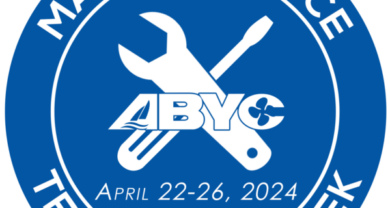U.S. Coast Guard drops life jacket type code labels
ANNAPOLIS, Md. – In a move that’s expected to benefit recreational boaters, on October 22 the U.S. Coast Guard will drop the current life jacket type code scheme – Type I, II, III, IV and V – that has been used for years to label and differentiate the types of life jackets and their specific use. Chris Edmonston, BoatUS Foundation for Boating Safety president and chairman of the National Safe Boating Council, said, “The boating safety community believes this move by the Coast Guard will help lead the way toward more comfortable and innovative life jacket designs, help boaters stay on the right side of the law, lower costs and save lives.”
Explains Edmonston, “This is positive news is that we will no longer see a Type I, II, III, IV or V label on a new life jacket label after October 22. This type coding was unique to the United States, tended to confuse boaters, limited choice and increased the cost of life jackets.” He says removing the type coding is a first step towards the adoption of new standards that will eventually simplify life jacket requirements for recreational boaters.
“This move is expected to lead to the introduction of new life jacket designs, especially those made in other countries as U.S. standards will be more ‘harmonized,’ initially Canada and eventually the European Union,” said Edmonston. “Along with a wider variety, aligning our standards with those to our neighbor to the north and across the Atlantic will help reduce prices as manufacturers won’t have to make products unique to the U.S. market.”
However, Edmonston cautions boaters must still abide by the current standards when using older life jackets marked with the Type I-V labeling, as they will remain legal for use. “We must continue to have a properly fitted life jacket for all aboard, and as always, you’ll need to follow the label’s instructions regardless of when it was made. Simply put, if you follow the label, you’re following the law.” A full list of the current life jacket types and descriptions can be found at BoatUS.org/life-jackets, and any update on new life jacket types and styles will be posted on the website when available.
In additional effort to help change the mindset of what a life jacket must look like, The BoatUS Foundation, the Personal Floatation Device Manufacturers Association (PFDMA) and the National Marine Manufacturers Association (NMMA) recently kicked off an “Innovations in Life Jacket Design Competition” to seek out the newest technologies and design ideas. Running through April 15, 2015, the contest seeks entries from groups or individuals, including collegiate design programs, armchair inventors or even boat and fishing clubs. Entries may be as simple as hand-drawn theoretical designs to working prototypes and will be judged based on four criteria: wearability, reliability, cost and innovation. For more, go to BoatUS.org/design.
UPDATE – We would like to provide some clarification and additional information to our original release:
- Type coding is being removed as a USCG requirement as of October 22nd. However, manufacturers will continue to use Type I-V coding until newer labels are designed and approved, and new standards are adopted.
- Removing type coding is simply the first step in a multi-year process, which includes designing new labels and developing new, ‘harmonized’ standards. Once that is accomplished, manufacturers will then be able to get jackets approved under the new standards. It’s at that point that we’ll see life jackets without the current type coding on their labels.
- Our friends in the life jacket manufacturing community further advise that 2017 is likely the earliest they could potentially see any new life jacket standards on production lines.
- Current life jackets that have Type I-V coding on their labels will be legal to sell and wear for the useful life of the jacket.





another dumbing down of usa the human body has not changed cg had it right was a simple system
Exactly so, Mr. Connell ! This nonsense abut how “The average person was unable to identify the various types of PFD, therefore we’re changing to a more ‘globally harmonized’ and easier to understand identification system” is bunk! If “the average person” is too damned stupid to understand the differences between the various PFD types, then “the average person” should not be allowed out of his or her house – let along be permitted to operate a motorized vessel! Now, IF the changes will indeed allow the implementation and acceptance of lifejacket designs such as are found in the UK (which are admittedly often superior to those in the US) then this may be a useful change. Otherwise it is simply one more example of Idiots in Big Government making up regulations simply for the sake of keeping their jobs!